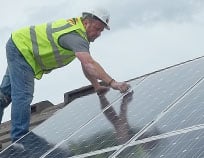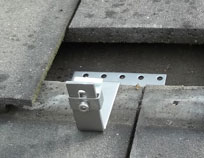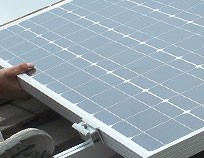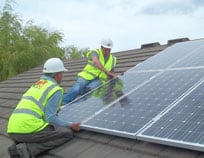Solar photovoltaic electricity systems, more commonly known as Solar PV, make use of solar cells to convert light energy from the sun into electricity. This electricity can then be used to run household appliances and lighting, for example.
Solar PV systems are interconnected solar cells packaged together and covered with toughened safety glass for protection to form a solid panel or tile. These can then be attached to your roof or any other suitable location.
The generation of electricity occurs inside the solar cell and is completely safe.
The solar PV system does not need direct sunlight to work and will still generate electricity on cloudy and overcast days.
On average each 1 KW of PV installed on your house should provide around 800 KWh (units) of electricity per year. You will get paid for every kWh of electricity your system produces regardless of whether you use it in your home or export it to the national grid.
The following video from Mitsubishi explains exactly how daylight is converted into useful electricity:




